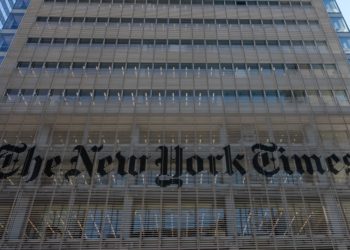THE CLUB: Where American Women Artists Found Refuge in Belle Époque Paris, by Jennifer Dasal
Americans have never gone to Paris quietly. Since the 1860s, when thousands were washed to Europe on a rising swell of wealth, they have, inevitably, turned their gaze on one another.
So it is that the art historian Jennifer Dasal can produce “The Club,” a full history of a long-forgotten establishment — the belle epoque American Girls’ Art Club — based almost entirely on newspaper and magazine articles written by Americans, for Americans, about Americans in Paris.
What was this refuge that inspired such reams of copy — and who were the “girls” it served? For the most part, they were dedicated artists who had exhausted the training opportunities at home and knew that Paris was where careers were made, and where fellow students provided a ready-made community.
If only, an aspiring Parisienne might have sighed, the newspapers would lay off headlines like “Martyrs to Art in the French Capital,” with their lurid warnings about starvation, loneliness and ubiquitous foreigners! Conceived as a bulwark against this swirl of dangers, the Club was the brainchild of Helen Newell, wife of the minister of the American cathedral, and Elisabeth Mills Reid, whose husband served as ambassador to France.
It opened in 1893 at 4 Rue de Chevreuse in the Latin Quarter, a neighborhood teeming with art schools, studios, cheap restaurants and fellow Americans. Set around a beautiful secluded garden, it provided cheap, secure lodging for 40-odd women, boasting a library, studio space, exhibition hall, restaurant and a much-commented-upon Sunday afternoon tea, served from a large brass samovar.
Like all Edens, this idyll flourished within strict limits: Residents had to leave their keys, and any plans for the evening, with the concierge, and lights and visitors went out at 10 sharp. Throughout the Club’s existence, these two impulses — freedom and safety — were always in tension.
And safety for whom? In 1899, when a talented young Black American sculptor named Meta Vaux Warrick arrived at the Club, she was refused lodging by the director, Julia Acly, with the shocked declaration, “You didn’t tell me you weren’t a white girl!” Warrick wrote to the American consul in protest: This was supposed to be a club for American girls. Was she not an American girl?
“It is an incredible shame to note that Warrick was not welcomed warmly into the fold of the American Girls’ Club,” Dasal writes — but it was more than that. This was not a failure of kindness, but a deliberate refusal — in this era of fierce backlash to Reconstruction — to allow a Black woman entry into the sheltered sphere of innocence, fully claiming both womanhood and Americanness either womanhood or Americanness.
Despite the purported risks of Paris, Dasal details only one tragedy — the mysterious death of a young artist named Gertrude Weil, whose body was fished from the Seine in June 1897. The community was understandably shocked, and rumors of suicide swirled. Dasal notes that Weil was Jewish, which apparently dashed her hopes of marrying her gentile boyfriend; curiously, though, she doesn’t write more generally about the artist’s experience in 1890s Paris, as the roiling Dreyfus affair exposed the vicious antisemitism at the heart of French political life.
There is a similar disconnect between context and individual experience in Dasal’s discussion of lesbians, several of whom found a congenial home at the club. Eschewing marriage was one reliable way for an artist of the era to declare her dedication to art; it was also a convenient cover. Dasal quotes the hugely influential French painter Rosa Bonheur’s claim “I wed art” in this context, but without mentioning that Bonheur also considered herself essentially married to another woman for 40 years.
Of another Club resident, Alice Morgan Wright, Dasal writes that “she might safely be identified as a lesbian,” on account of her female life partner. “Safely” is an odd term to choose, especially given that a large part of the allure of Paris was that it was a “safer” place for queer women — like Natalie Barney, Gertrude Stein and Alice B. Toklas — to live their lives openly.
Then, suddenly, it was over. When World War I crashed the party in the summer of 1914, Elisabeth Mills Reid retrofitted the Club as a convalescent hospital and lent it to the Red Cross. After the Armistice, she opted to turn it into a residence for female graduate students; today it operates as Columbia University’s global center in Paris.
With its gendered and artistic focus lost to history, what, Dasal wonders, is the legacy of this “oasis in Bohemia” and its member artists? To answer the question, she turns to the familiar obstacles enumerated in Linda Nochlin’s 1971 essay, “Why Have There Been No Great Women Artists?” — inadequate training, a male-dominated establishment and critical neglect, to name a few. Yet there is ample evidence that when scholars today actually highlight neglected work by women, visitors and readers are eager to look at it, and even willing to learn a few new names.
It’s therefore a shame that despite the wealth of historical detail Dasal amasses and her fine analysis of a number of artworks, she resists making bolder claims for the importance of artists who passed through the club. Readers will no doubt come away curious to know more about the lives and work of artists like Meta Vaux Warrick Fuller, Alice Morgan Wright, Anne Goldthwaite and others, in Paris and beyond.
: Where American Women Artists Found Refuge in Belle Époque Paris | By Jennifer Dasal | Bloomsbury | 326 pp. | $29.99
The post Where to Be Female, Bohemian and Free in 1890s Paris? appeared first on New York Times.




